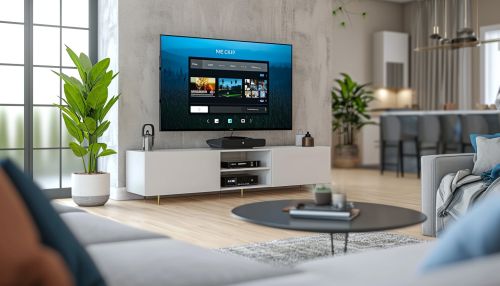Internet Protocol television
Introduction
Internet Protocol television (IPTV) is a system that delivers television services over the Internet Protocol (IP) instead of traditional terrestrial, satellite signal, and cable television formats. Unlike downloaded media, IPTV offers the ability to stream the source media continuously. As a result, a client media player can begin playing the content (such as a TV channel) almost immediately. This is known as streaming media.


Technology
IPTV services may be classified into three main groups:
- Live television, with or without interactivity related to the current TV show;
- Time-shifted television: catch-up TV (replays a TV show that was broadcast hours or days ago), start-over TV (replays the current TV show from its beginning);
- Video on demand (VOD): browse and view items in a stored media catalogue.
Architecture
IPTV's architecture can be divided into two types: centralized and distributed.
Centralized Architecture
The centralized architecture model is a relatively simple and easy to manage solution. Because all media content is stored in centralized servers, it does not require a comprehensive content distribution system. Centralized architecture is generally good for a network that provides relatively small VOD service scope, has adequate core and edge bandwidth or has an efficient content delivery network (CDN).
Distributed Architecture
Distributed architecture requires intelligent and sophisticated content distribution technologies to augment effective delivery of multimedia contents over the service provider's network. Distributed architecture is just as scalable as the centralized model, however it has bandwidth usage advantages and inherent system management features that are essential for managing a larger server network. Operators who plan to deploy a relatively large system should therefore consider implementing a distributed architecture model right from the start.
Protocols
IPTV covers both live TV (multicast) as well as stored video-on-demand/VoD (unicast). Playback requires a broadband device connected to either a fixed or wireless IP network in the form of either a standalone personal computer or limited embedded OS device such as a smartphone, touch screen tablet, game console, connected TV or set-top box. Video compression is provided by either MPEG-2 or MPEG-4 AVC (H.264). IP multicasting allows for live data to be sent to multiple receivers using a single multicast group address.
Challenges
The high-speed data transfer will increase the needed bandwidth for the viewer, at least 2 Mbit/s is needed to use web-based applications on the computer.
